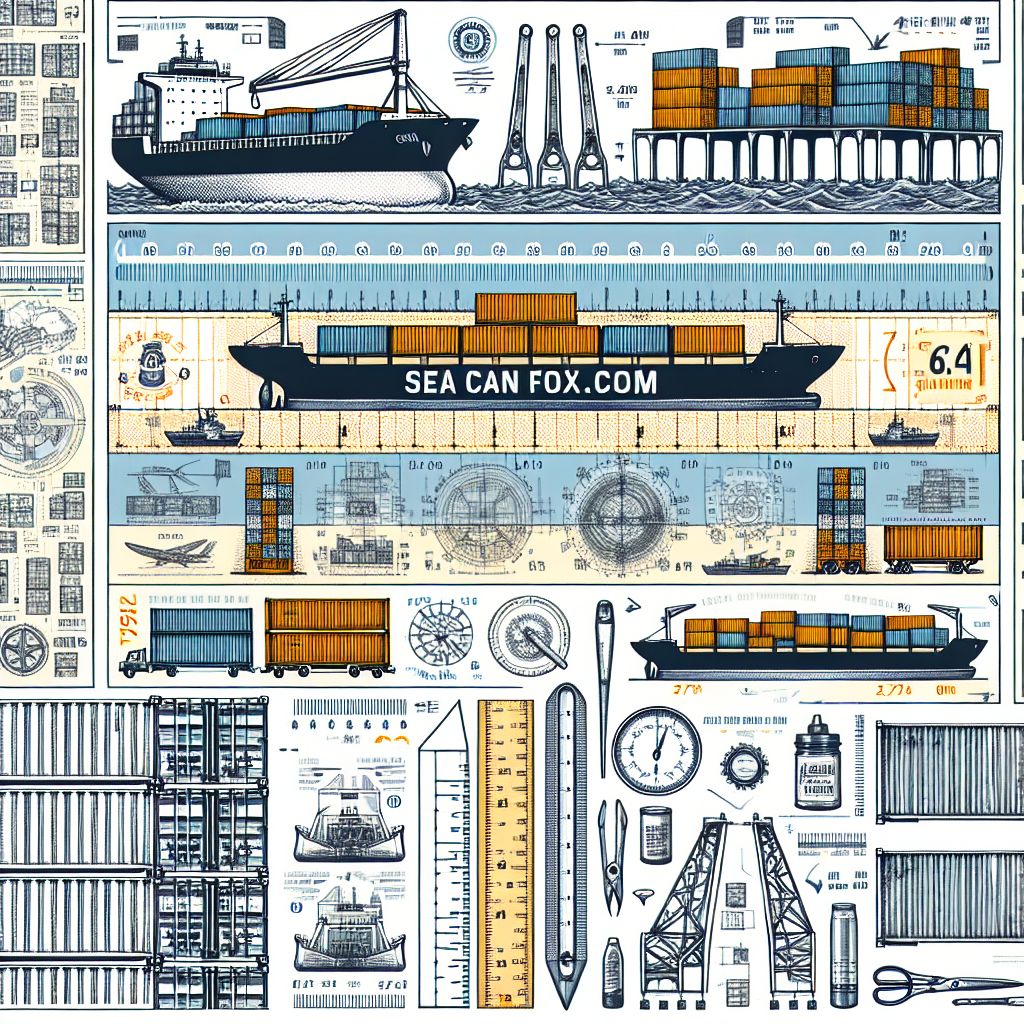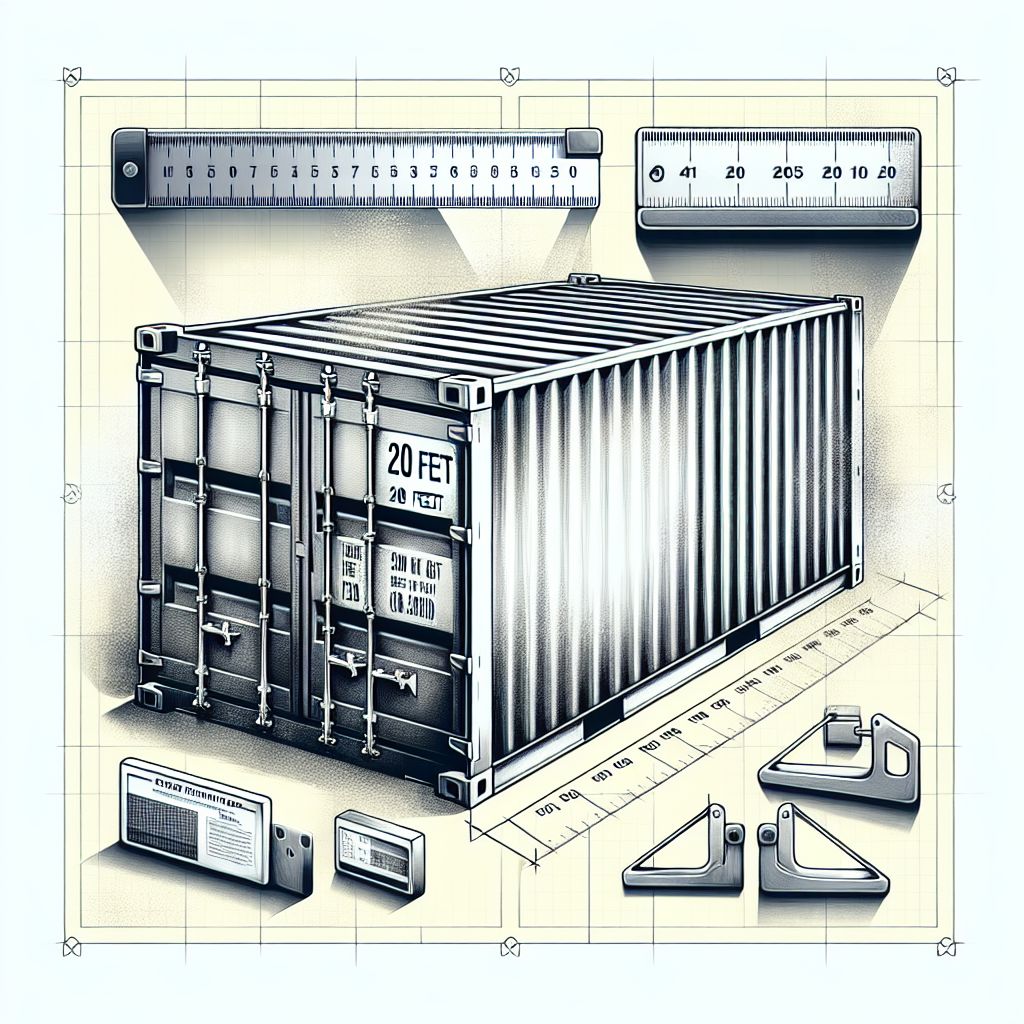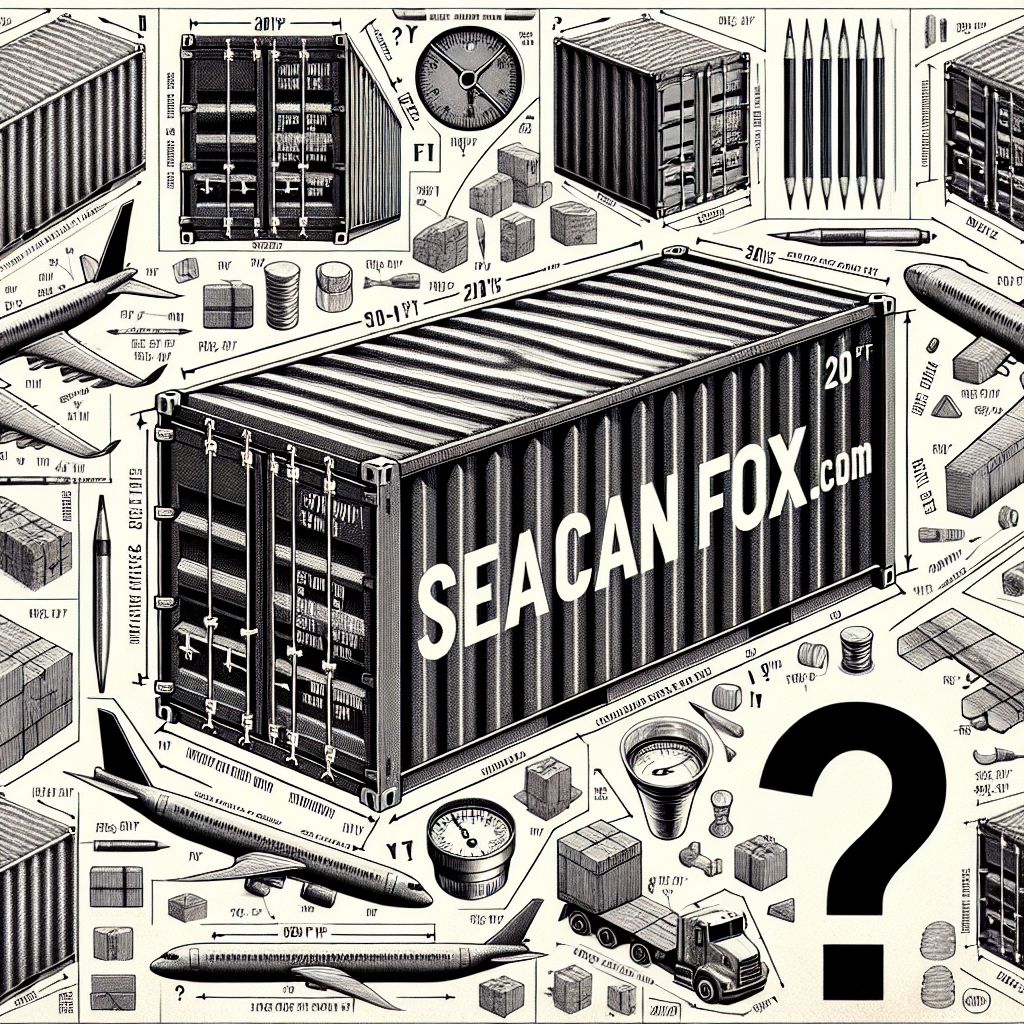
Key Takeaways
- A standard 20ft shipping container typically measures 6.06 meters (20 feet) in length, 2.44 meters (8 feet) in width, and 2.59 meters (8 feet 6 inches) in height.
- The 40ft High Cube container adds extra height for more space, measuring approximately 12.19 meters (40 feet) long, 2.44 meters (8 feet) wide, and 2.89 meters (9 feet 6 inches) tall.
- Understanding the dimensions and weight capacity of containers is essential for optimizing cargo load and reducing shipping costs.
- Specialized containers, like the 10ft and 35ft options, provide solutions for cargo that doesn’t fit the standard sizes.
- Always consider the internal dimensions and door openings when planning the loading of your container to ensure a smooth and efficient packing process.
The Definitive Guide to Shipping Container Dimensions
Container Types and Uses
Shipping containers come in various types and sizes, each designed for specific purposes. Standard containers are the most common, used for dry cargo such as boxes,
Why obsess over a few centimeters or inches? Because in shipping, space is money. Every square meter on a ship is valuable, and maximizing container usage can significantly reduce costs. Smaller containers, like the 10ft, can be perfect for less cargo or tighter spaces, while larger ones, like the 40ft, are cost-effective for bulk shipments.
My Favorite Container Homes Resource
I compared the top 3 Container Home Guides
to discover the ultimate resource!
See my top recommendation here
Most importantly, knowing the exact dimensions of containers helps prevent overloading and ensures that your cargo complies with international shipping regulations. This knowledge is power – the power to avoid delays and additional charges.
The Weight Factor: Balancing Load and Capacity
The weight of a container is just as important as its size. Overloading not only poses safety risks but can also incur hefty fines. Adhering to the container’s weight limit ensures a smooth sail from port to port. Now, let’s get into the specifics of each container size and its attributes.
Standard Shipping Containers and their Dimensions
20ft Standard Containers
The 20ft container is the industry’s workhorse. It’s the Goldilocks of shipping containers – not too big, not too small, just right for most cargo. Its dimensions are practical for easy handling and can be transported using most standard vehicles and equipment.
40ft Standard Containers
When you need more space, the 40ft container is your go-to. It’s essentially double the length of a 20ft container, which means you can ship twice as much without doubling your handling costs. It’s ideal for large shipments that don’t require the extra height of a High Cube.

High Cube Shipping Containers: Extra Height for Additional Space
Imagine a standard container, then give it a growth spurt – that’s a High Cube container for you. It’s the skyscraper in the container world, providing that extra headroom for taller goods or a bit more volume without needing a bigger footprint. High Cube containers are the solution when you’re aiming to maximize every inch of vertical space.
20ft High Cube Containers
The 20ft High Cube container is a modest size with a significant advantage – an extra foot in height. It’s perfect for stacking materials higher or for accommodating taller items that just won’t squeeze into a standard container. These containers are also a favorite for various modified uses, like pop-up shops or mobile offices, where that extra vertical space can be creatively utilized.
40ft High Cube Containers
Then we have the 40ft High Cube container, a behemoth that combines the length of a standard 40ft with the added height of a High Cube. It’s the best of both worlds for shipping large, lightweight cargoes that require both horizontal and vertical space. For shippers, it means more bang for your buck, maximizing the cargo volume without increasing the footprint.
Specialized Containers: When Standard Sizes Don’t Cut It
Sometimes, the one-size-fits-all approach doesn’t work, especially when dealing with unusual cargo. That’s where specialized containers come into play. Whether you’re shipping heavy machinery, perishable goods, or anything that doesn’t conform to standard sizes, there’s a container built to handle it.
10ft Storage Options
Compact, convenient, and versatile, the 10ft container is ideal for smaller loads, tight spaces, or as an additional secure storage unit. It’s like the small, but mighty ant of the container world, proving that great things come in small packages. They are particularly useful for personal or commercial sites where space is at a premium.
Explore our unique 35ft shipping solutions for your storage and transportation needs.
35ft shipping solution
Now, let’s talk about the 35ft container, a size that’s not as common but fills a niche for certain shipping needs. It strikes a balance between the more typical 20ft and 40ft options, offering a middle ground for cargo volume. When your shipment is too large for a 20ft but doesn’t justify the use of a 40ft, the 35ft container can be the perfect fit.
Size and Weight Chart for Shipping Containers
Below is a detailed chart listing the various shipping container sizes, their dimensions in both meters and feet, and their typical weight capacity. This is the kind of information that helps you plan your shipments down to the last detail.
| Type | Size | External Dimensions (meters/feet) | Internal Dimensions (meters/feet) | Door Opening (WxH, meters/feet) | Weight Capacity (kg/lbs) |
|---|---|---|---|---|---|
| 20ft Standard | 6.06m / 20ft | 6.06 x 2.44 x 2.59 / 20 x 8 x 8.5 | 5.9 x 2.35 x 2.39 / 19.4 x 7.7 x 7.8 | 2.34 x 2.28 / 7.7 x 7.5 | 28,235 / 62,345 |
| 40ft Standard | 12.19m / 40ft | 12.19 x 2.44 x 2.59 / 40 x 8 x 8.5 | 12.03 x 2.35 x 2.39 / 39.5 x 7.7 x 7.8 | 2.34 x 2.28 / 7.7 x 7.5 | 30,480 / 67,200 |
| 20ft High Cube | 6.06m / 20ft | 6.06 x 2.44 x 2.89 / 20 x 8 x 9.5 | 5.9 x 2.35 x 2.69 / 19.4 x 7.7 x 8.8 | 2.34 x 2.58 / 7.7 x 8.5 | 28,235 / 62,345 |
| 40ft High Cube | 12.19m / 40ft | 12.19 x 2.44 x 2.89 / 40 x 8 x 9.5 | 12.03 x 2.35 x 2.69 / 39.5 x 7.7 x 8.8 | 2.34 x 2.58 / 7.7 x 8.5 | 30,480 / 67,200 |
| 10ft | 3.05m / 10ft | 3.05 x 2.44 x 2.59 / 10 x 8 x 8.5 | 2.84 x 2.35 x 2.39 / 9.3 x 7.7 x 7.8 | 2.34 x 2.28 / 7.7 x 7.5 | 10,160 / 22,400 |
| 35ft | 10.67m / 35ft | 10.67 x 2.44 x 2.59 / 35 x 8 x 8.5 | 10.52 x 2.35 x 2.39 / 34.5 x 7.7 x 7.8 | 2.34 x 2.28 / 7.7 x 7.5 | 24,000 / 52,910 |
References:
https://jingsourcing.com/b-container-sizes-dimensions/
https://www.budgetshippingcontainers.co.uk/shipping-container-dimensions/
https://www.containercontainer.com/shipping-container-dimensions/
https://www.sjonescontainers.co.uk/container-dimensions/
https://www.discovercontainers.com/shipping-container-dimensions/
Strategic Container Selection for Various Cargo Types
Here’s a quick rundown on how to select the right container:
- Measure your cargo accurately and consider its volume and weight.
- Think about the nature of the goods. Are they fragile, perishable, or oversized?
- Factor in loading and unloading requirements. Will you need a container with easy access from the top or sides?
- Consider the final destination and the infrastructure there. Will a large container fit, or is a smaller one necessary?
Choosing the Best Container for Your Shipping Needs
Calculating the most efficient container for your shipping needs is not just about the dimensions; it’s about the entire process. Start by listing out your cargo details, including weight, size, and type. Next, match these details with the container specifications that best fit your requirements. Consider the costs of each container size, potential stacking and loading strategies, and the transportation mode. Sometimes, using a larger container that’s not fully filled can be more cost-effective than using multiple smaller containers. Efficiency is the key to cost savings and smooth logistics.

Frequently Asked Questions (FAQ)
Q: Why are shipping containers standardized?
- A: Shipping containers are standardized to fit seamlessly into the global logistics system. They can be stacked, transported, and handled worldwide without compatibility issues. This standardization ensures safety in stacking and transporting, as well as efficiency in space utilization on ships, trucks, and trains.
Q: How do standardized dimensions benefit shipping?
- A: Standardized dimensions facilitate the intermodal transport of goods, improving the efficiency of loading, unloading, and stacking during shipping. This standardization also ensures that containers can be handled by equipment at any port in the world.
Q: Is it possible to customize a shipping container to unique dimensions?
- A: Customizing a shipping container to fit unique dimensions is possible but comes with its own set of challenges. It can be more expensive and may not be as easily accepted in standard transport systems. If your cargo requires a custom size, it’s best to consult with a specialist who can advise on the feasibility and cost-effectiveness of such an endeavor.
Q: How does the weight of a shipping container affect shipping costs?
- A: The weight of a shipping container, including its cargo, directly affects shipping costs. Heavier containers may require more fuel to transport and can lead to higher shipping fees. Additionally, there are weight limits for transport vehicles and infrastructure to consider, which can impact the modes of transportation available for your shipment.
Q: What is the main difference between a standard and a high cube container?
- A: The main difference between a standard and a high cube container is height. A standard container typically has a height of 8 feet 6 inches, while a high cube container is 9 feet 6 inches tall. This extra foot of height provides additional volume, which can be crucial for certain types of cargo or for maximizing space in shipping and storage.
Q: What are the limitations of using a 10ft container for shipping?
- A: While a 10ft container offers a compact shipping solution, it does have limitations in terms of what can be shipped. Due to its smaller size, it may not be suitable for large or very heavy items. It’s important to measure your cargo and ensure it fits within the dimensions and weight capacity of a 10ft container before deciding to use one.






Leave a Reply